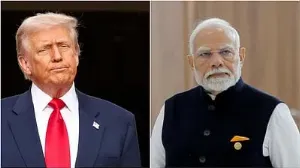Nitish Kumar forms new Bihar government with expanded NDA cabinet

Nitish Kumar has begun his tenth term as Chief Minister of Bihar after taking the oath of office at a large public ceremony in Patna’s Gandhi Maidan on Thursday. The event marked the formal start of a new National Democratic Alliance (NDA) government following the coalition’s sweeping victory in the recent state elections.
Prime Minister Narendra Modi, Union Home Minister Amit Shah and Bharatiya Janata Party (BJP) president JP Nadda were among several national leaders who attended the ceremony. Chief ministers from Haryana, Assam and Nagaland also travelled to the state capital to witness the handover.
A total of 26 ministers joined the cabinet alongside the Chief Minister, representing a wide mix of political parties within the NDA coalition. According to official announcements, the BJP secured the largest share of portfolios with 14 ministerial positions, while the Janata Dal (United), led by Mr Kumar, filled nine roles. Smaller coalition partners, including the Lok Janshakti Party (Ram Vilas), Hindustani Awam Morcha (Secular) and the Rashtriya Lok Morcha, were also allocated seats in the cabinet.
Cabinet composition
Senior BJP leaders Samrat Choudhary and Vijay Kumar Sinha were sworn in as deputy chief ministers, continuing in roles they held in the previous administration. Other cabinet members from the BJP include Dilip Jaiswal, Mangal Pandey, Nitin Nabin, Ram Kripal Yadav, Sanjay Singh Tiger, Arun Shankar Prasad, Surendra Mehta, Narayan Prasad, Rama Nishad, Lakhendra Kumar Roshan, Pramod Kumar, Deepak Prakash and Shreyasi Singh.
The JD(U) contingent includes Vijay Kumar Choudhary, Bijendra Prasad Yadav, Shravan Kumar, Ashok Choudhary, Leshi Singh, Madan Sahni, Sunil Kumar and Mohammad Zama Khan, in addition to the Chief Minister.
From the LJP (Ram Vilas), Sanjay Kumar and Sanjay Kumar Singh were inducted into the cabinet. Santosh Kumar Suman of the Hindustani Awam Morcha (Secular) and Deepak Prakash Kushwaha of the Rashtriya Lok Morcha also took the oath.
The expansion of representation across parties reflects the NDA’s internal balancing strategy following its victory in the 243-seat state assembly. The coalition secured 202 seats, with the BJP winning 89, the JD(U) 85, LJP(RV) 19, HAM(S) 5 and the RLM 4.
Transition of power
Before the ceremony, Mr Kumar submitted his resignation to Governor Arif Mohammad Khan as the previous assembly’s term approached its end. The resignation cleared the way for the formation of the 18th Bihar Assembly, which will formally convene from 26 November for a three-day session. During this session, members will elect the Speaker and Deputy Speaker, and newly elected legislators will take their oaths.
The oath-taking phase marks the culmination of weeks of post-election preparations, during which alliance partners held discussions to determine ministerial allocations. According to political observers, the distribution of cabinet posts underscores the BJP’s growing influence in the state coalition, even as Mr Kumar remains its acknowledged leader.
Event highlights
The swearing-in ceremony drew thousands of spectators and brought together senior political figures from across the country. Security was tightened across central Patna, with multiple agencies coordinating crowd management at Gandhi Maidan.
Witnesses described the event as one of the largest political gatherings in the state this year, reflecting both the symbolic weight of Mr Kumar’s record tenth term and the coalition’s overwhelming electoral mandate.
Context: Bihar’s shifting political landscape
Mr Kumar’s return to office continues a long-running political career that has shaped Bihar’s governance since the mid-2000s. His alliances have changed over time, but he has remained a dominant figure in state politics, presenting himself as a consensus builder capable of maintaining broad coalitions.
Analysts say the new cabinet composition will be critical as the government addresses issues such as employment, infrastructure development and welfare delivery. The presence of leaders from parties representing marginalised and caste-based communities is expected to influence policy discussions in the months ahead.
With the cabinet now in place, attention is turning toward the legislative session beginning on 26 November, which will offer early indications of the government’s priorities as it embarks on its next five-year term.

Nitish Kumar Sworn In as Bihar Chief Minister for Tenth Term

Trump Claims Role in Halting Conflict Between India and Pakistan

Anmol Bishnoi Detained for 11 Days by NIA Following Deportation

Sensex rises 513 points as IT stocks lift Indian markets





